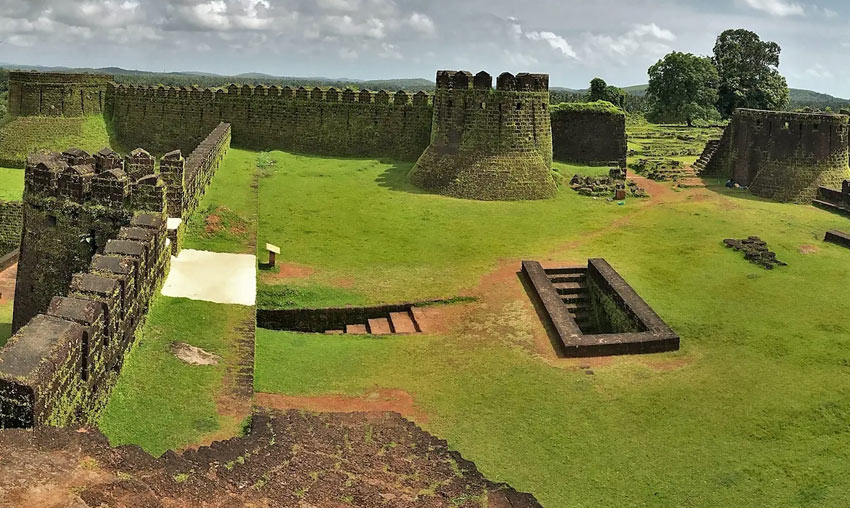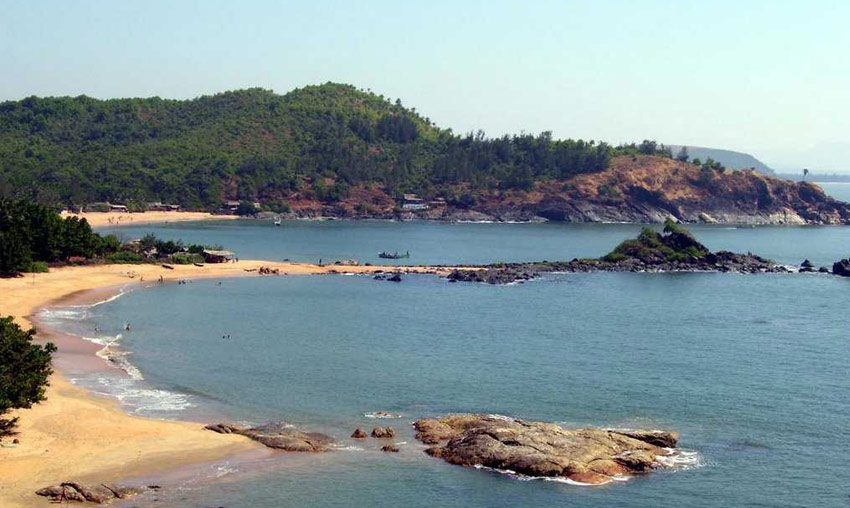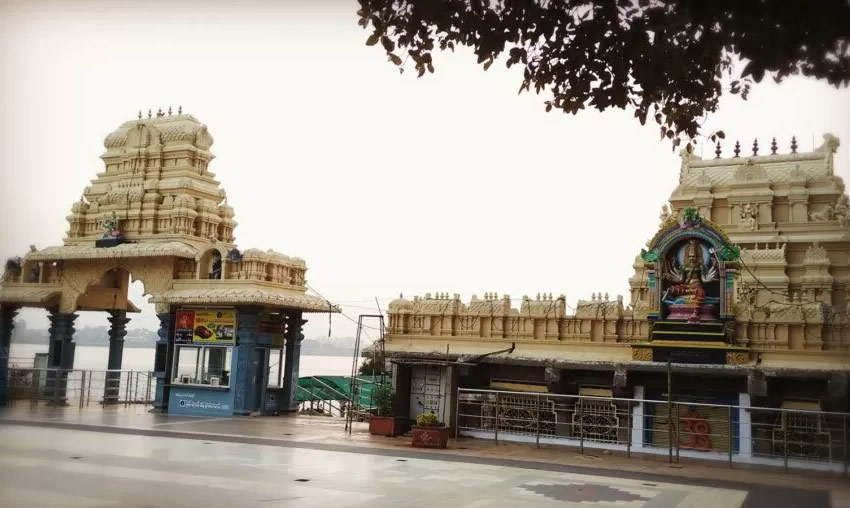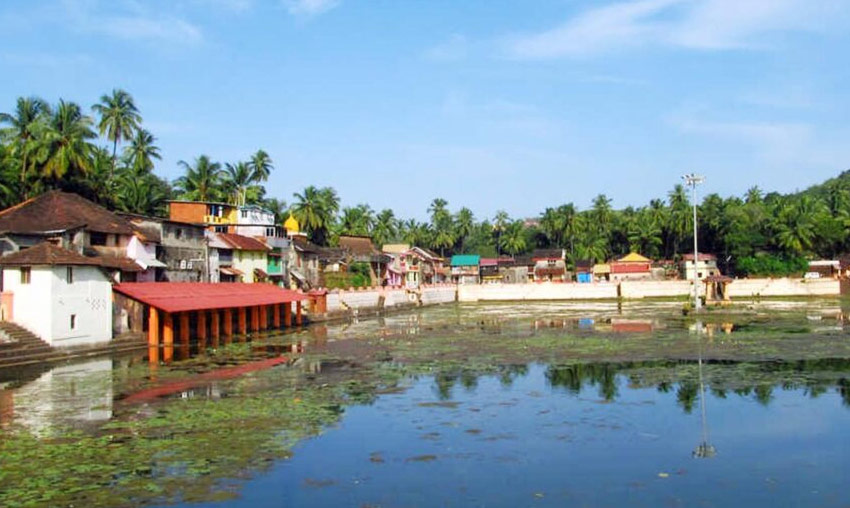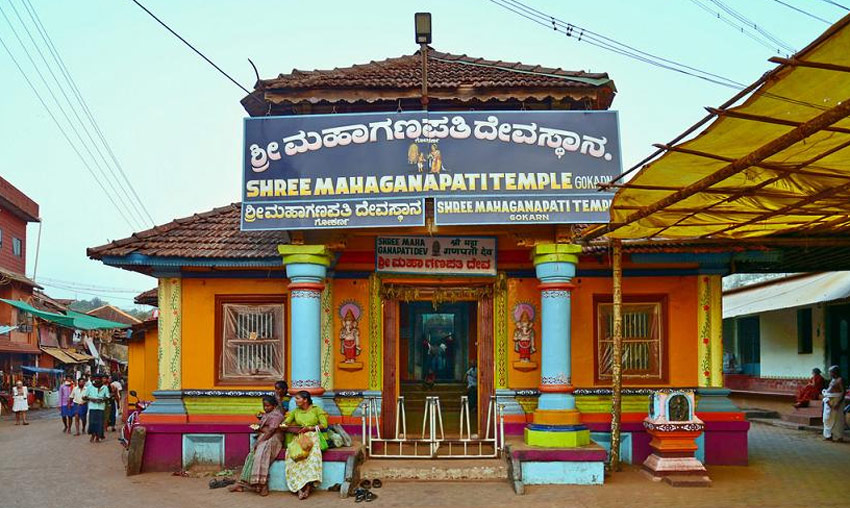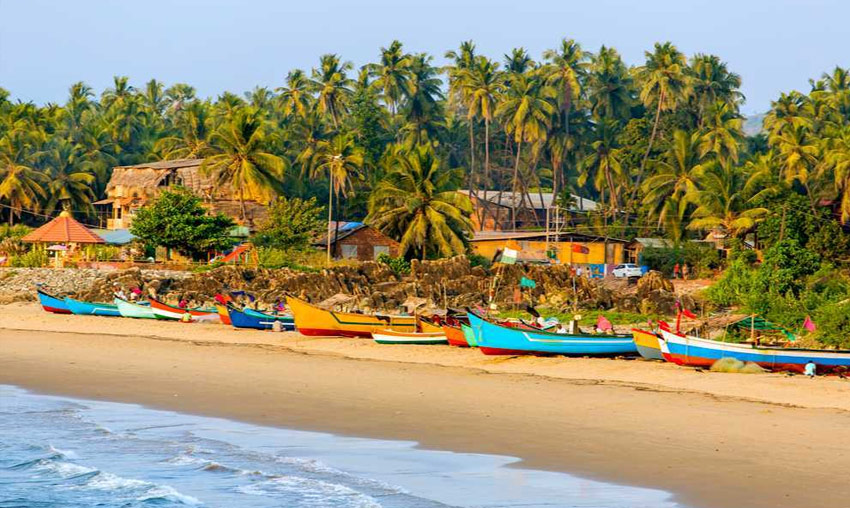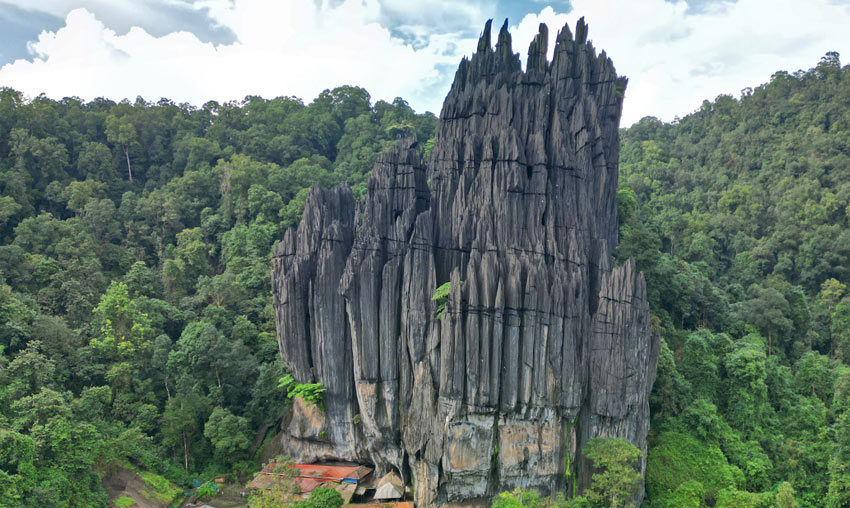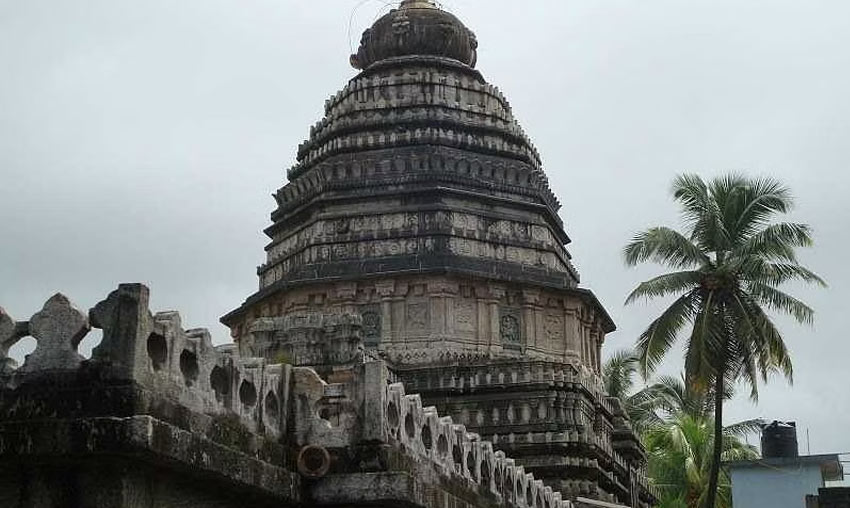Mirjan Fort Gokarna (Entry Fee, Timings, History, Built by, Images & Location)
Buried deep in the bosom of nature on the beach, Mirjan Fort in Gokarna is a great place to go on holiday. On the banks of the Aghanashini River, Mirjan Fort stands as a majestic reminder of our glorious history. This 4.1-hectare fort from the 16th century, located around 22 kilometers from Gokarna, is rich in history and cultural treasures. But there are many stories about the fort’s modest (or not so modest) origins.
Buried deep in the bosom of nature on the beach, Mirjan Fort in Gokarna is a great place to go on holiday. On the banks of the Aghanashini River, Mirjan Fort stands as a majestic reminder of our glorious history. This 4.1-hectare fort from the 16th century, located around 22 kilometers from Gokarna, is rich in history and cultural treasures. But there are many stories about the fort’s modest (or not so modest) origins.
The laterite stone used to build this spectacular edifice is readily available in the area.
#Trivia: According to legend, this was one of the busiest ports for the British, Dutch, and Portuguese worldwide spice trade.
The monument has been designated as a preserved monument by the Archaeological Survey of India (ASI). Its condition has been improved by recent restorations. Tucked away in the gorgeous surroundings, this historic site is an overlooked gem in the nation’s tourism industry. In 2001, the group also conducted a number of archaeological excavation, uncovering numerous medieval laterite buildings.
#Interesting facts: Other antiquarian discoveries include gold coins from Portuguese Viceroy Conde De Sarzedas, cannonballs, Chinese ceramics, and clay tablets with Islamic writing. It is thought that the fort complex contained a buried treasure that was later seized by the British.
The Indian flag is flown over the fort on Independence Day every year.
Architecture of Mirjan Fort
Its strong walls, watchtowers, and bastions made it one of the most impregnable forts. The fort was probably protected by a system of four entrances, one main and three subsidiaries, with numerous interconnected wells and access passages that led to the circular moat. A moat that links to the canals encircles the fort. Residents use the exit gates to make a swift getaway in the event of an enemy attack.
The 10-acre fort was built of laterite stones that could be found nearby. Although its architecture is Indianized, Portuguese and Islamic culture have had a significant influence. One of Karnataka’s most stunning tourist destinations is the Mirjan Fort in Gokarna. With multiple wells excavated to preserve water for usage during and after the war, the fort has withstood the most intense battles and held out under siege.
Due to the several battles it has seen over its existence, the fort is now in ruins. You may now observe a fully restored northernmost bastion defense system after the ASI completed a respectable number of repairs. The stones that were nearby completed the remodeling.
History of Mirjan Fort
There are various theories on the beginnings of Mirjan Fort’s lengthy and remarkable history. One tale states that Chennabhairav Devi, the Pepper Queen of the Tuluva-Saluva dynasty, built the fort in the sixteenth century.
She ruled over the Vijayanagar region of Gersoppa for almost 54 years, making it one of the longest reigns in the subcontinent. The districts of North and South Kannada and South Goa were her strongholds.
Following the battle of Tallikota in 1565, when the Bijapur Sultans invaded the region, she relocated her power center from Mirjan to a safe location on an island in the middle of the Sharavathi Riverbed. After that, she became a Jainist and built numerous Jain temples. The British occupied the fort in 1784 after the Marathas did so in 1757.
Following the battle of Tallikota in 1565, when the Bijapur Sultans invaded the region, she relocated her power center from Mirjan to a safe location on an island in the middle of the Sharavathi Riverbed. After that, she became a Jainist and built numerous Jain temples. The British occupied the fort in 1784 after the Marathas did so in 1757.
One story states that the Vijayanagara Empire eventually purchased the fort, which had been constructed by the Nawayath Sultanates in 1200 A.D.
According to a different version of the fort’s history, Sherif-ul-Mulk, a nobleman from Bijapur, built it to protect the city of Kumta and the south-facing Kumta fort.
Mirjan Fort was ruled by the Vijayanagara Empire, according to another tale.
Following the battle of Tallikota in 1565, when the Bijapur Sultans invaded the region, she relocated her power center from Mirjan to a safe location on an island in the middle of the Sharavathi Riverbed. After that, she became a Jainist and built numerous Jain temples. The British occupied the fort in 1784 after the Marathas did so in 1757.
The former governor of Goa, Sharief-ul-Mulk, restored it to his liking when the kingdom collapsed and was seized by the Bijapur Sultans. In 1676, this region was occupied by Chennamma, the queen of the Kela dead dynasty. Taking full advantage of a local rebellion, the Marathas took control of the fort in 1757, and Major Torriano of the British administration took it in 1784.
The former governor of Goa, Sharief-ul-Mulk, restored it to his liking when the kingdom collapsed and was seized by the Bijapur Sultans. In 1676, this region was occupied by Chennamma, the queen of the Kela dead dynasty. Taking full advantage of a local rebellion, the Marathas took control of the fort in 1757, and Major Torriano of the British administration took it in 1784.
That’s a lot of history to take in and retain. However, a trip to Gokarna’s Mirjan Fort will make everything come together nicely.
That’s a lot of history to take in and retain. However, a trip to Gokarna’s Mirjan Fort will make everything come together nicely.
Best time to visit Mirjan Fort in Gokarna
All year long, Gokarna’s Mirjan Fort is a great place to go on vacation. With its magnificent grasslands and enormous stone formations, this location is most enjoyable after the rainy season.
The best months to visit Mirjan Fort are September through February. Even though you might occasionally get rains, they won’t ruin your trip. We suggest visiting the area in the winter, from November to February, if you don’t like the rainy season.
Summers are hot and muggy because it’s a coastal region, therefore it’s often not the best season to visit the fort.
Things you can do Near Mirjan Fort
In Gokarna, there are a few activities that you may do with your loved ones close to Mirjan Fort.
1. Sunset from the beach: As the waves roll in and a stunning reflection touches the sea, you may take in the captivating sunset.
2. Water sports: There are many shacks on the beaches of Mirjan Fort that provide water sports including jet skiing, surfing, swimming, banana boat excursions, and parasailing.
3. Engage in Yoga: The benefits of yoga can revitalize your body and mind while you take in the sea’s peace and the entrancing atmosphere. A perfect way to start or finish the day.
Entry fee and timings of Mirjan Fort
All year long, Mirjan Fort is accessible to the general public. Anytime between 8 a.m. and 6 p.m., you are welcome to visit. No Entry Fee
#Tidbit of trivia: The fort is stretched across ten acres and can be explored in one to two hours.
How To Reach Mirjan Fort
Kumta is 11 miles away from Mirjan Fort, Gokarna is 22 km away, Honavar is 31 km away, Karwar is 59 km away, and Murudeshwar is 56 km away. From any of these cities, you can rent a private vehicle or take the bus.
